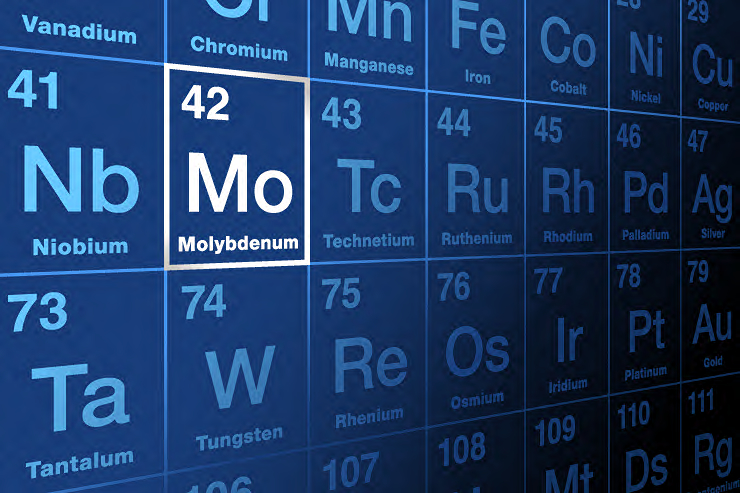Molybdenum metal and molybdenum-based alloys have a unique combination of properties, including:
- High strength at elevated temperatures
- High thermal and electrical conductivity
- Low thermal expansion
Molybdenum metal and its alloys are therefore the first choice in many demanding specialized applications in electronics, heat treatment and metal processing.
A little molybdenum goes a long way
The bulk of molybdenum is used as an alloying element in steels and other metals. Its unique features make it highly effective in improving the properties of a variety of alloys. As little as 0.1% molybdenum has a marked effect on the strength of carbon steels and 0.5% molybdenum can noticeably improve the corrosion resistance of stainless steels.
The key effects in different alloy systems are:
- In carbon steels, molybdenum boosts hardness, strength and high-temperature strength, while retaining good toughness and ductility as well as weldability
- In stainless steels, it improves corrosion resistance and high-temperature strength
- In nickel-based alloys, it raises corrosion resistance
- In superalloys, it plays a role in bolstering high-temperature strength
Read more about molybdenum in iron, steel and other metal alloys
Molybdenum increases longevity in applications
Because molybdenum enhances the performance of alloys, it strongly contributes to the sustainability of many applications. Through light-weighting, improved durability and reduced maintenance it increases longevity; safety and efficiency; and saves resources and energy. Molybdenum-containing materials are used across nearly all industry sectors, including building and construction, chemical and other processing, oil and gas, mechanical engineering, power generation, transportation, medical and consumer products.
Read more about molybdenum's contribution to sustainability
Molybdenum is essential for life
Molybdenum is an essential trace element crucial for life, with functions that range from enabling nitrogen fixation in plants to metabolism of amino acids in humans and animals. Healthy plant life is promoted by molybdenum-supplementation of some soils, and in humans it is synthesized into enzymes that play a vital role in maintaining bodily functions.
Read more about molybdenum as an essential trace element

